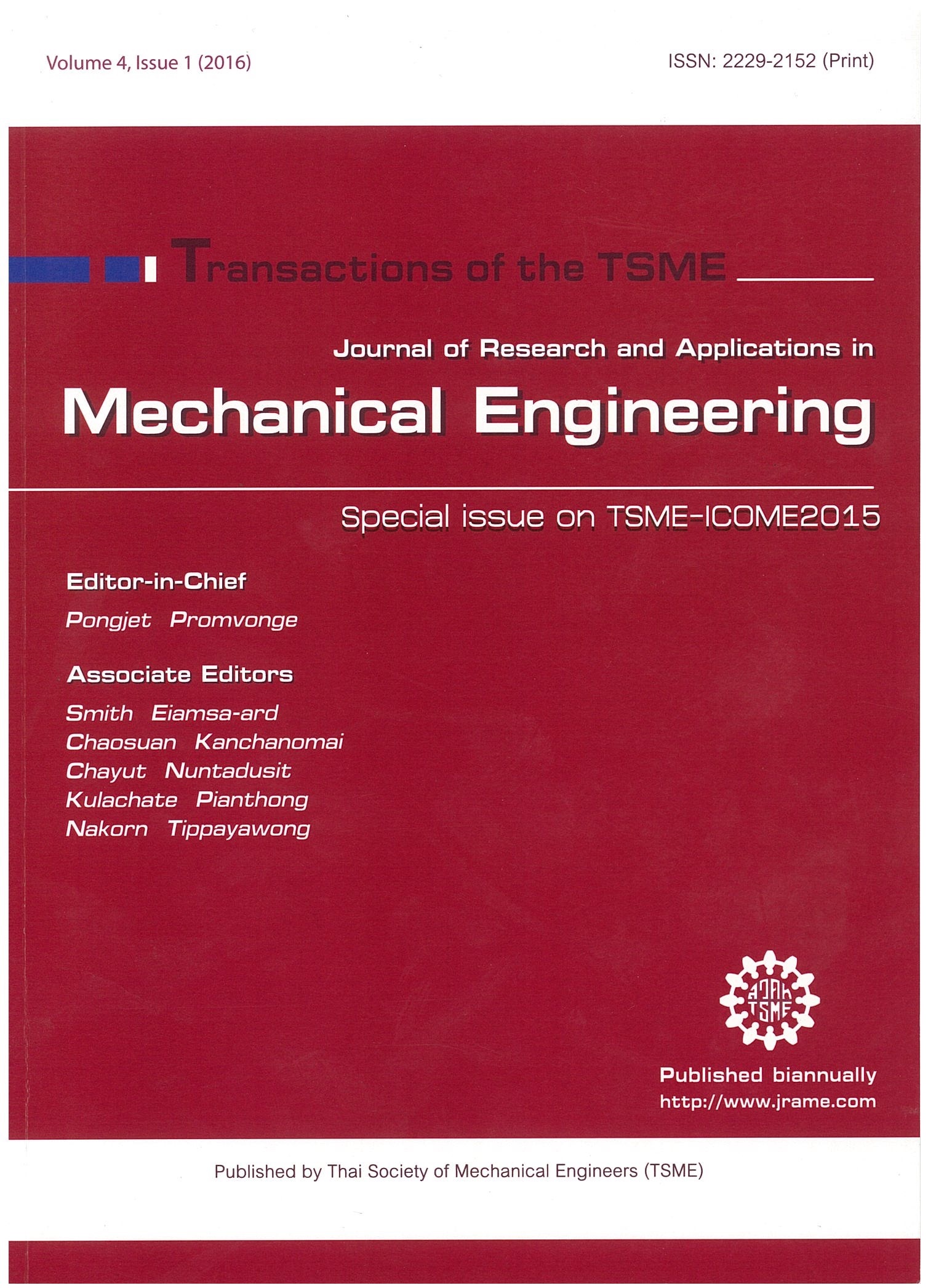PSO-based leg-loss identification method for legged robots
Main Article Content
Abstract
Legged robots have been widely developed and utilized in various applications since they are more flexible than the conventional wheel-based robots which cannot perform effectively in bumpy areas. Although the legged robot has no difficulty operating in uneven terrain, the broken parts of legged robot can lead to the task failure. In case of damages, the legged robots cannot operate properly with prior control strategies due to transformed models. This paper proposes the new method to detect the broken legs by employing only internal sensors. The lengths of robot legs will be estimated using the comparison between damaged robot and candidate models constructed in the simulation. Particle Swarm Optimization (PSO) is operated to discover the best candidate model that provides the highest fitness value. The similarity of orientation of robot body between actual damaged robot and candidate models is set as the fitness function calculated using normalized cross-correlation algorithm. The efficiency of this method is verified using numerical simulations and experiments, which shows that the proposed method can detect the lengths of robot legs more accurate than the existing method.
Article Details
This work is licensed under a Creative Commons Attribution-NonCommercial-ShareAlike 4.0 International License.
References
[2] Koos, S., Cully, A. and Mouret, J.B. Fast damage recovery in robotics with the T-resilience algorithm, International Journal of Robotics Research, Vol. 32(14), 2013, pp. 1700-1723.
[3] Seljanko, F. Fault detection algorithm for legged walking robot, IEEE International Conference on Mechatronics and Automation, 2013, Takamatsu, Japan.
[4] Roennau, A., Heppner, G., Kerscher, T. and Dillmann, R. Fault diagnosis and system status monitoring for a six-legged walking robot, IEEE/ASME International Conference on Advanced Intelligent Mechatronics, 2011, Budapest, Hungary.
[5] Hashlamon, I. and Erbatur, K. Joint sensor fault detection and recovery based on virtual sensor for walking legged robots, IEEE 23rd International Symposium on Industrial Electronics (ISIE), 2014, Istanbul, Turkey.
[6] Johnson, A.M., Haynes, G.C. and Koditschek, D.E. Disturbance detection, identification, and recovery by gait transition in legged robots, IEEE/RSJ International Conference on Intelligent Robots and Systems, 2010, Taipei, Taiwan.
[7] Bongrad, J., Zykov, V. and Lipson, H. Resilient machines through continuous self-modeling, SICENCE, Vol. 314, 2006, pp. 1118-1121.
[8] Liang, J. and Xue, C. Self identification and control of four-leg robot based on biological evolutionary mechanisms, IEEE Conference on Industrial Electronics and Applications, 2010, Taichung, Taiwan.
[9] Gao, H., Wang, T., Liang, J. and Zhou, Y. Model adaptive gait scheme based on evolutionary algorithm, IEEE Conference on Industrial Electronics and Applications, 2013, Melbourne, Australian.
[10] Stein J.Y. Digital Signal Processing: A Computer Science Perspective, ISBN 0-471-29546-9, 2000, John Wiley & Sons, New York.
[11] Shi, Y. and Eberhart, R. A modified particle swarm optimizer, IEEE World Congress on Computational Intelligence, 1998, Anchorage, Alaska, USA.



